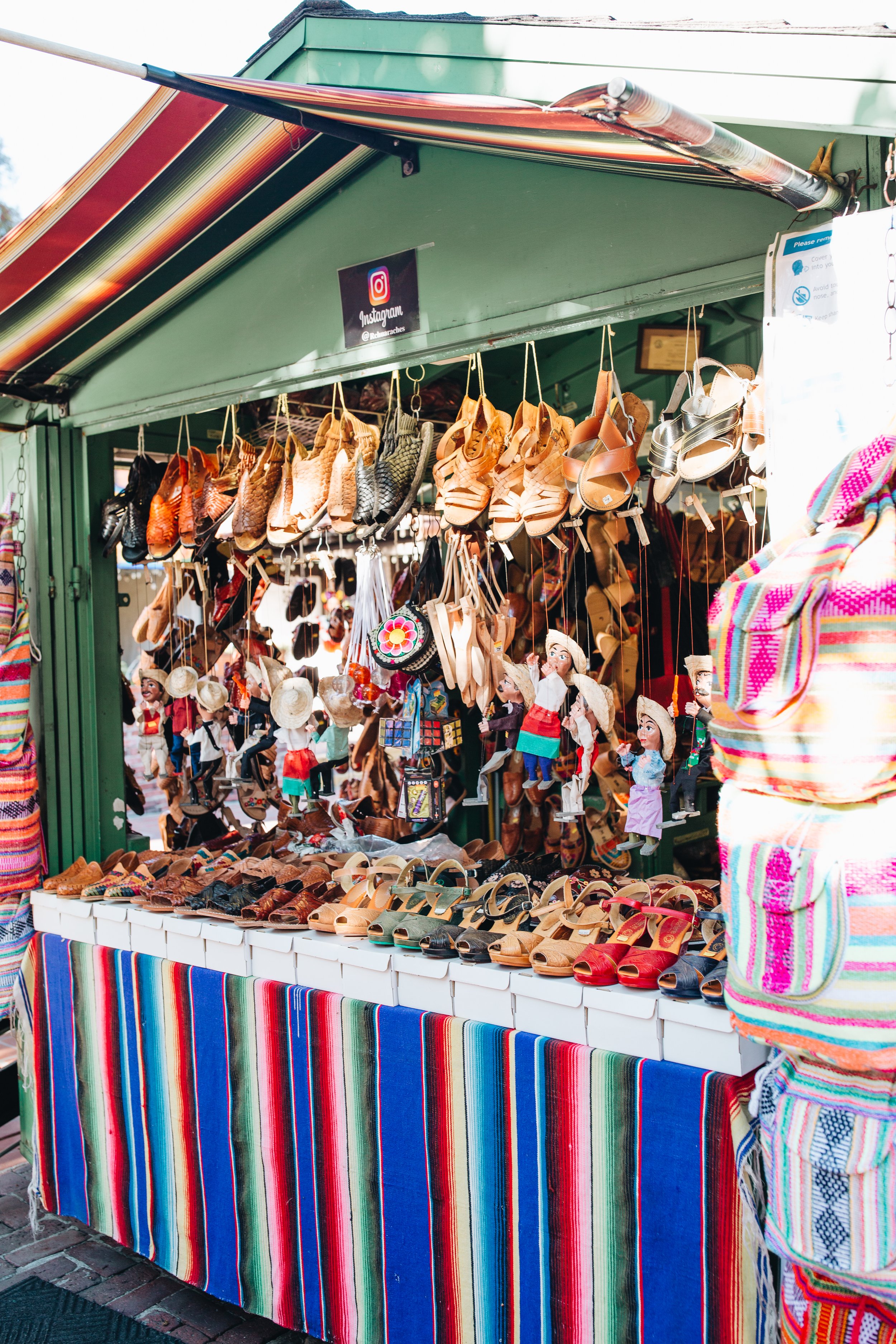Discover the Lively Mexican Culture of Olvera Street in Downtown L.A.
Olvera Street is in oldest part of downtown Los Angeles, where a vibrant Mexican American culture thrives. Colorful folk art and handicrafts line the streets, while outdoor vendors peddle huaraches, handbags and maracas. The smell of fresh tortillas fills the air, while sipping sweet aqua frescas as the Southern California sun beats down on your shoulders. Historical Buildings tell the story of a prominent city being born, and just beyond, shiny new skyscrapers are the wet ink of new chapters.
Top Downtown LA Architecture Tours
Downtown Los Angeles boasts an abundance of remarkable historical buildings. For a deeper understanding of their significance, taking a guided tour is a fantastic way to gain historical insights while exploring these architectural gems. Here are a few that are highly rated on Get Your Guide and include a stop at Olvera Street.
You can also consider purchasing the book Secret Walks (Amazon), which offers several downtown strolls for exploring the architecture of Downtown L.A. My husband I took many walks here during COVID to see more of our own city.
To Get There
There are 5 parking lots at El Pueblo (The building pictured above). The best to park at are two lots are on Main Street, or another on Alameda Street. Olvera Street by Alameda and Cesar E. Chavez Avenue.
The History
According to the official site of El Pueblo, the original settlers of this region were natives that were here centuries before the Spanish came. Los Angeles Plaza Historic District is the oldest part of Los Angeles, and was founded in 1781. The Spanish ruled in the late 18th and early 19th century. It was then taken back over by Mexico, and then taken over by the United States in 1847. It’s now listed as on the National Register of Historic Places.
Olvera Street was originally named Wine Street. It was renamed in 1877 named in honor of a prominent local judge, Augustín Olvera.
Olvera Street almost met its end in the early 1900’s, it was slated to be torn down. A young Northern California socialite came to the rescue with her love of history, and she fought to keep the historic structures. Her vision came to life when the buildings were preserved and the area was reignited as a cultural center for the roots of its Mexican American past.
Olvera Street Today
Olvera Street is now a colorful Mexican marketplace with restaurants, handicrafts and folk art. There is also a lot of cheesy cheap tourist items mixed in, but it’s still worth the trip to see some of the unique art and eat some delicious Mexican cuisine.
Restaurants on Olvera Street
Come here to explore the rich Mexican culture and have some delicious Mexican cuisine along the way. Some great restaurants that have been around for a long time exist here.
La Luz Del Dia - authentic Michoacan Mexican food since 1959
El Paseo Inn - a historical landmark since 1930. This restaurant has a mural painted by artist Rubén Lara Campos in 1946.
Cielito Lindo - small stand with freshly made taquitos since 1934
To Explore
There are several historic buildings located on Olvera Street, and many more within the Los Angeles Plaza Historic District. These include the Garnier Building, Brunswig Building, the Mexican Cultural Center, Pico House and Old Plaza Firehouse.
Pio Pico, the last Mexican Governor of Alta California, ordered the construction of this hotel because the city was quickly growing. When the Pico House opened as a hotel in 1970 it was the most lavish hotel in all of Southern California.
The Old Plaza Firehouse shown below is the oldest fire station in L.A. and was built in 1884. Since 1960, it operates as a firefighting museum.
Do you have any other info on Olvera Street? Please leave it in the comments below.








